
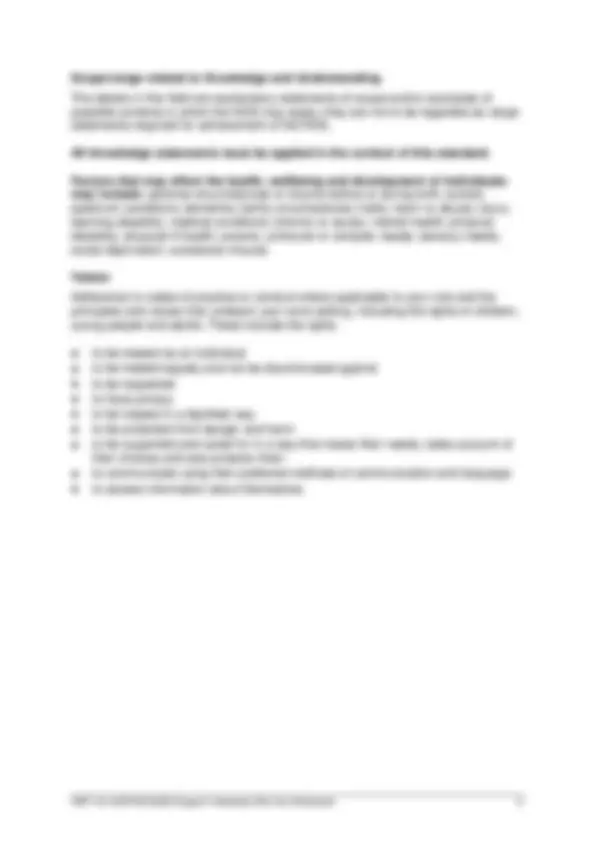
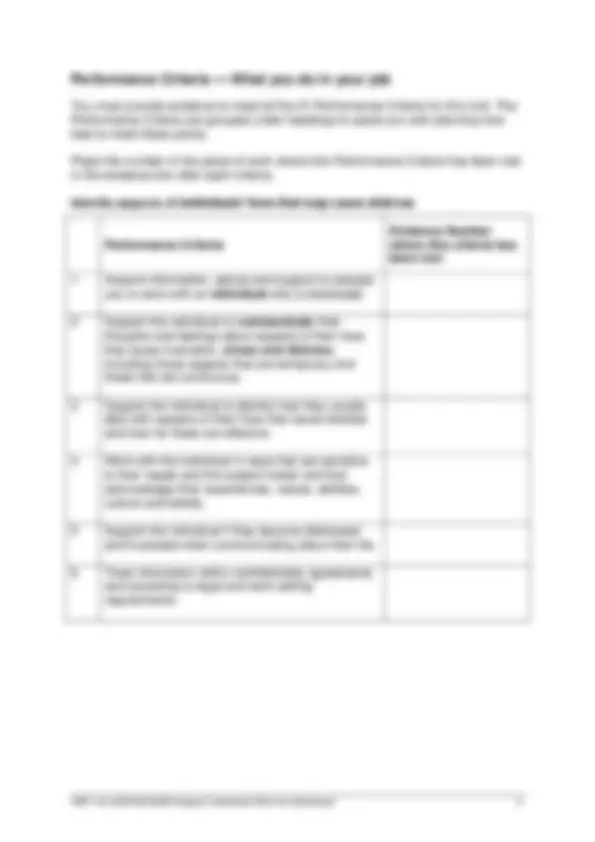
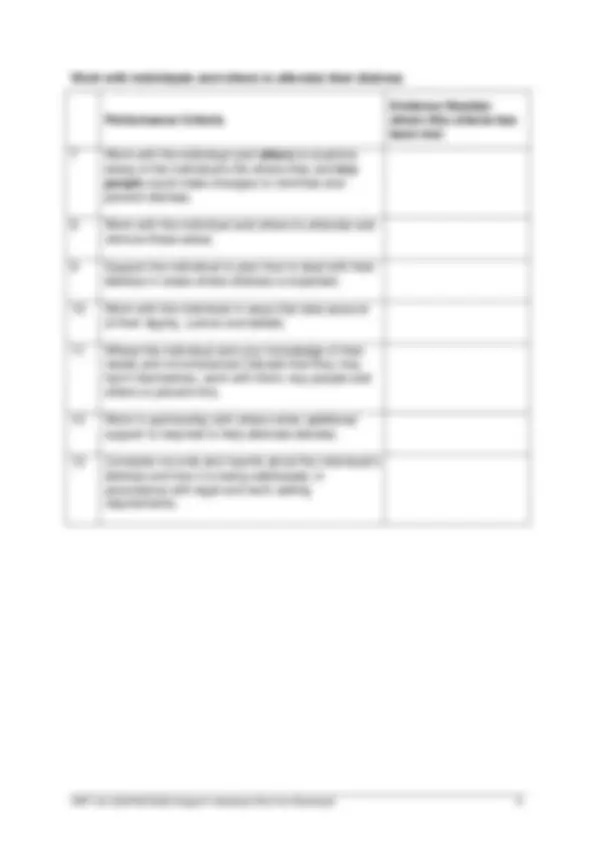
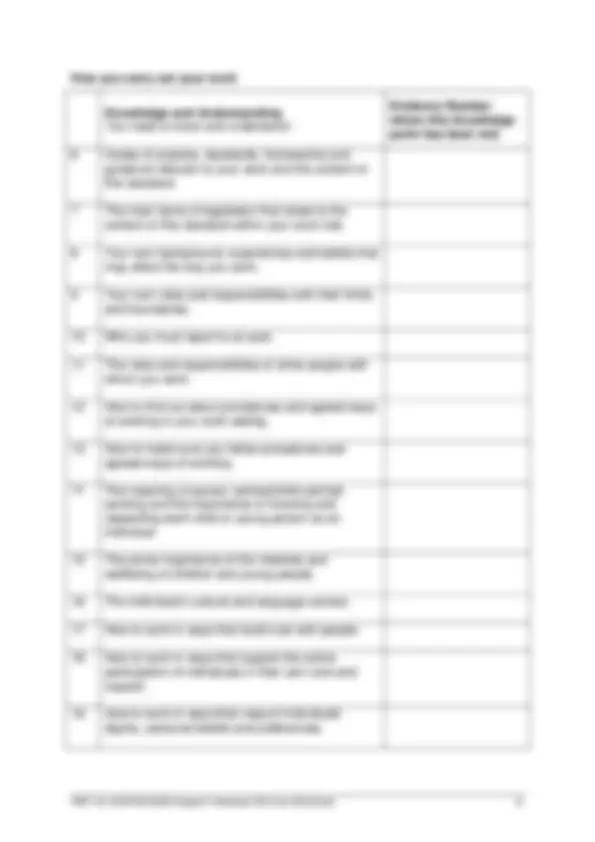
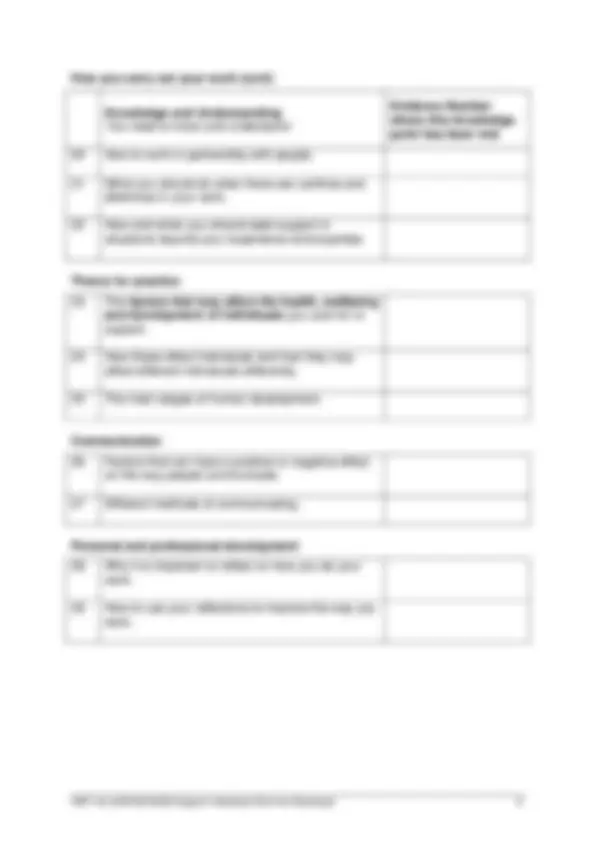
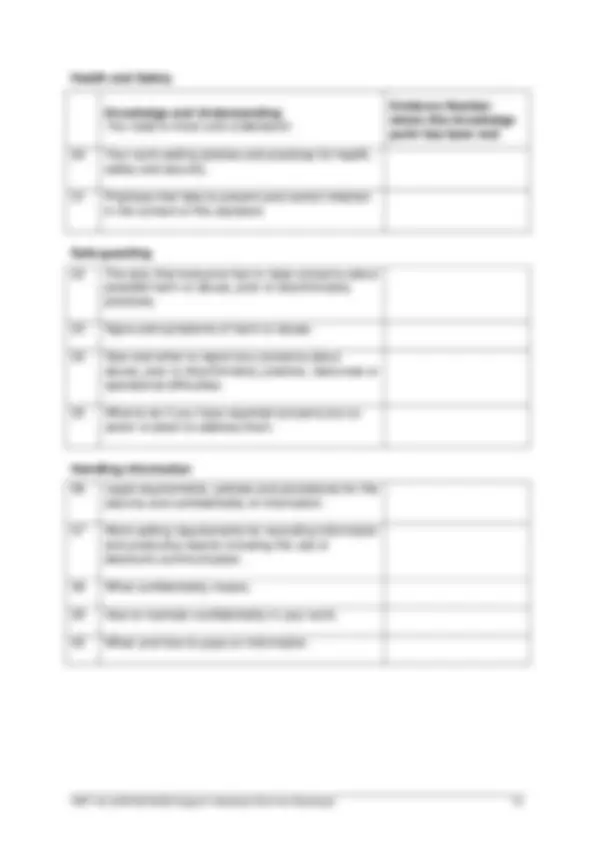


Study with the several resources on Docsity

Earn points by helping other students or get them with a premium plan


Prepare for your exams
Study with the several resources on Docsity

Earn points to download
Earn points by helping other students or get them with a premium plan
Community
Ask the community for help and clear up your study doubts
Discover the best universities in your country according to Docsity users
Free resources
Download our free guides on studying techniques, anxiety management strategies, and thesis advice from Docsity tutors
The requirements for supporting individuals who are distressed. It covers identifying aspects of individuals' lives that may cause distress, communicating effectively, working with individuals and others to alleviate distress, and supporting individuals during periods of stress and distress. The document also discusses the importance of confidentiality, dignity, and respect. It is a part of the H5P1 04 (SCDHSC0226) Support Individuals Who Are Distressed unit.
Typology: Study notes
1 / 12

This page cannot be seen from the preview
Don't miss anything!







Overview
This standard outlines the requirements when you support individuals who are distressed. This involves identifying aspects of individuals’ lives that may cause them distress and working with them and others to reduce their distress as far as possible. It also includes supporting individuals during specific periods of stress and distress.
Scope/range related to Performance Criteria
The details in this field are explanatory statements of scope and/or examples of possible contexts in which the NOS may apply; they are not to be regarded as range statements required for achievement of the NOS.
NOTE: Where an individual finds it difficult or impossible to express their own preferences and make decisions about their life, achievement of this standard may require the involvement of advocates or others who are able to represent the views and best interests of the individual.
Where there are language differences within the work setting, achievement of this standard may require the involvement of interpreters or translation services.
To communicate may include using the individual's preferred spoken language, the use of signs, the use of symbols or pictures, writing, objects of reference, communication passports, other non-verbal forms of communication, human and technological aids to communication.
The individual is the person you support or care for in your work.
Key people are those who are important to an individual and who can make a difference to his or her wellbeing. Key people may include family, friends, carers and others with whom the individual has a supportive relationship.
Others are your colleagues and other professionals whose work contributes to the individual’s wellbeing and who enable you to carry out your role.
Stress and distress could be caused by loss of all types; bereavement; coping with changing conditions; personal crises; having to re-learn existing skills; having to develop new skills and coping strategies.
You must provide evidence to meet all the 21 Performance Criteria for this Unit. The Performance Criteria are grouped under headings to assist you with planning how best to meet these points.
Place the number of the piece of work where this Performance Criteria has been met in the evidence box after each criteria.
Identify aspects of individuals’ lives that may cause distress
Performance Criteria
Evidence Number where this criteria has been met
1 Acquire information, advice and support to prepare you to work with an individual who is distressed.
2 Support the individual to communicate their thoughts and feelings about aspects of their lives that cause frustration, stress and distress , including those aspects that are temporary and those that are continuous.
3 Support the individual to identify how they usually deal with aspects of their lives that cause distress and how far these are effective.
4 Work with the individual in ways that are sensitive to their needs and the subject matter and that acknowledge their experiences, values, abilities, culture and beliefs.
5 Support the individual if they become distressed and frustrated when communicating about their life.
6 Treat information within confidentiality agreements and according to legal and work setting requirements.
Work with individuals and others to alleviate their distress
Performance Criteria
Evidence Number where this criteria has been met
7 Work with the individual and others to examine areas of the individual's life where they and key people could make changes to minimise and prevent distress.
8 Work with the individual and others to alleviate and remove these areas.
9 Support the individual to plan how to deal with their distress in areas where distress is expected.
10 Work with the individual in ways that take account of their dignity, culture and beliefs.
11 Where the individual and your knowledge of their needs and circumstances indicate that they may harm themselves, work with them, key people and others to prevent this.
12 Work in partnership with others when additional support is required to help alleviate distress.
13 Complete records and reports about the individual’s distress and how it is being addressed, in accordance with legal and work setting requirements.
You must provide evidence of your knowledge and understanding to meet all the 47 knowledge points for this Unit. The knowledge points are grouped under headings to assist you with planning how best to meet them.
Place the number of the piece of work where each knowledge point has been met in the ‘evidence number ‘box after each point.
Rights
Knowledge and Understanding You need to know and understand:
Evidence Number where this knowledge point has been met
1 Work setting requirements on equality, diversity, discrimination and human rights.
2 Your role supporting rights, choices, wellbeing and active participation.
3 Your duty to report anything you notice people do, or anything they fail to do, that could obstruct individuals’ rights.
4 The actions to take if you have concerns about discrimination.
5 The rights that individuals have to make complaints and be supported to do so.
How you carry out your work
Knowledge and Understanding You need to know and understand:
Evidence Number where this knowledge point has been met
6 Codes of practice, standards, frameworks and guidance relevant to your work and the content of this standard.
7 The main items of legislation that relate to the content of this standard within your work role.
8 Your own background, experiences and beliefs that may affect the way you work.
9 Your own roles and responsibilities with their limits and boundaries.
10 Who you must report to at work.
11 The roles and responsibilities of other people with whom you work.
12 How to find out about procedures and agreed ways of working in your work setting.
13 How to make sure you follow procedures and agreed ways of working.
(^14) The meaning of person centred/child centred working and the importance of knowing and respecting each child or young person as an individual.
15 The prime importance of the interests and wellbeing of children and young people.
16 The individual’s cultural and language context.
17 How to work in ways that build trust with people.
18 How to work in ways that support the active participation of individuals in their own care and support.
19 How to work in ways that respect individuals’ dignity, personal beliefs and preferences.
Health and Safety
Knowledge and Understanding You need to know and understand:
Evidence Number where this knowledge point has been met
30 Your work setting policies and practices for health, safety and security.
31 Practices that help to prevent and control infection in the context of this standard.
Safe-guarding
32 The duty that everyone has to raise concerns about possible harm or abuse, poor or discriminatory practices.
33 Signs and symptoms of harm or abuse.
34 How and when to report any concerns about abuse, poor or discriminatory practice, resources or operational difficulties.
35 What to do if you have reported concerns but no action is taken to address them.
Handling information
36 Legal requirements, policies and procedures for the security and confidentiality of information.
37 Work setting requirements for recording information and producing reports including the use of electronic communication.
38 What confidentiality means.
39 How to maintain confidentiality in your work.
40 When and how to pass on information.
Knowledge that is Specific to this NOS
Knowledge and Understanding You need to know and understand:
Evidence Number where this knowledge point has been met
41 Common causes of stress and distress.
42 How stress and distress can affect individuals when undertaking new activities and developing new ways of coping with changes in their lives, needs, conditions and circumstances.
43 Signs and symptoms associated with levels of stress, distress and frustration that indicate specialist intervention generally and specifically for the individuals with whom you are working.
44 How stress and distress can affect the way individuals communicate.
45 The impact of stress and distress on key people and others within the care environment in which you work.
46 Methods of supporting individuals to share with you the aspects of their lives that are troubling them and causing them stress and distress.
47 Methods of supporting individuals to use their strengths, their own potential and that in their network to manage stress and distress constructively.